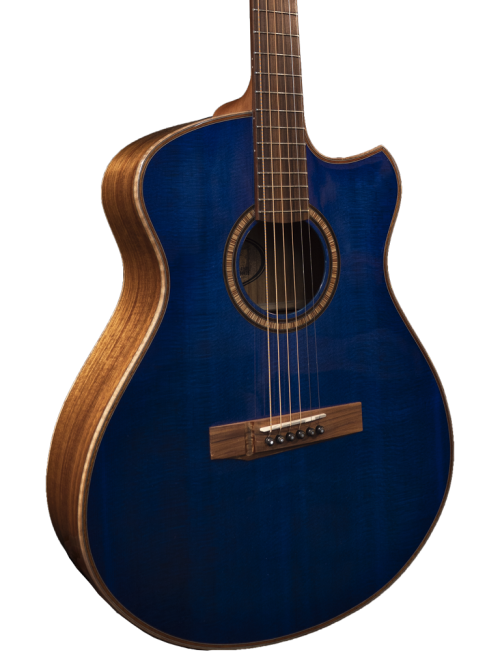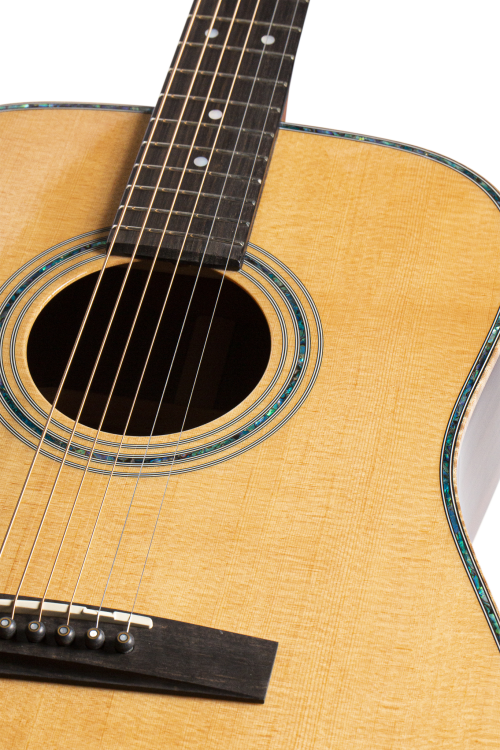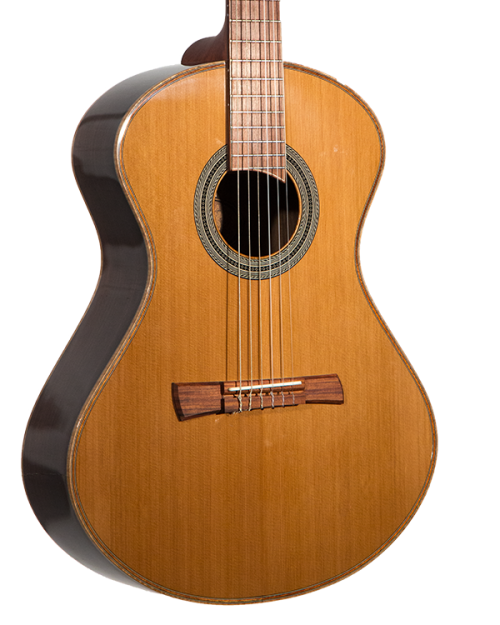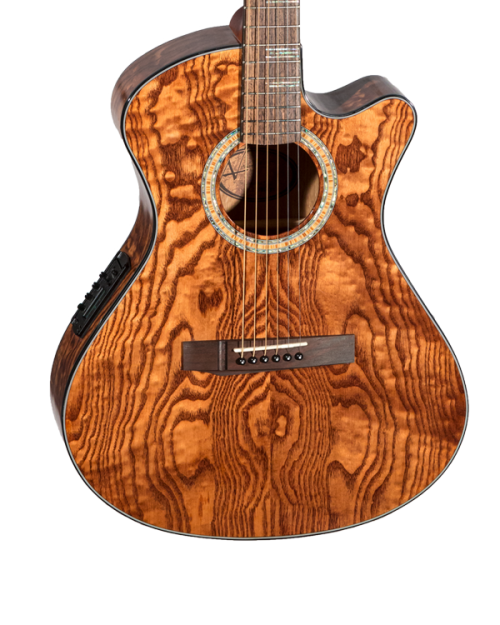Fingerstyle Music Analysis 101
With Mark Grover
In today’s blog post, I’d like to show you how I often view the fingerstyle compositions that I transcribe as having multiple voices. Imagining solo guitar music as a monophonic texture can make learning it more difficult, and performing it once it’s programed into your muscle memory have a bit less depth than it could.
How I view the voices depends on style being played. For instance, a Travis picking style is an easy one to split up. The thumb plays its own line and it’s usually a pretty static rhythm. I usually make its own voice in notation with the stems facing down. The melody is played with the other fingers and the stems for that would point up. Similarly, in the two-handed tapping styles popularized by players like Billy McLaughlin and Preston Reed, the left and right hands would have separate voices with opposite facing stems. In other cases, where the lines are interwoven and maybe not as clearly separated on a mechanical level, I choose to display how I hear the separation in terms of a high melody and a low melody. Where the melody notes that pop out will be displayed with the upward facing stems in the notation and the lower notes outline the implied harmony.
I have chosen to illustrate the latter, most complicated style, by reverse engineering a four bar excerpt from a composition titled “Torture Chamber” by Travis Bowman. I’ll show you the finished product in both monophonic and polyphonic textures, then how I isolated the low melody and broke it down into small parts.
By the way, if you’re not familiar with Travis yet, you should be. He was a three time finalist and eventually was crowned the champion of the fingerstyle guitar competition at the Walnut Valley Festival in Winfield, Kansas, which is widely regarded as the “world championships” of guitar. He was the grand prize winner of the first Ernie Ball Acoustic Prodigy Contest and won the privilege of recording an EP with Andy McKee. He was a founding member of the FRETMONKEY RECORDS label. He’s now teaching guitar to students the world over.
FIGURE 1 – Without the anacrusis, here is what the first four bars of the song look like in ungrouped notation:
Tuning: C2 C3 Eb3 G3 Bb3 D4
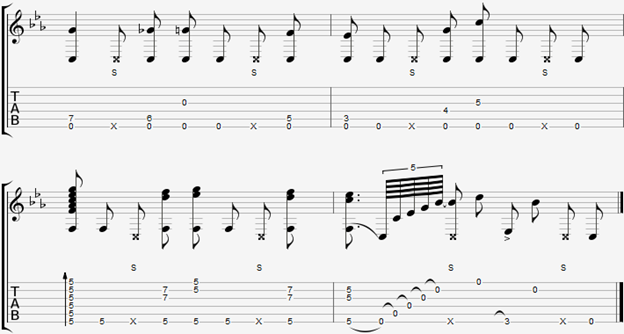
FIGURE 2 – Here are the same four bars with the notation split into two voices and grouped by quarter notes:
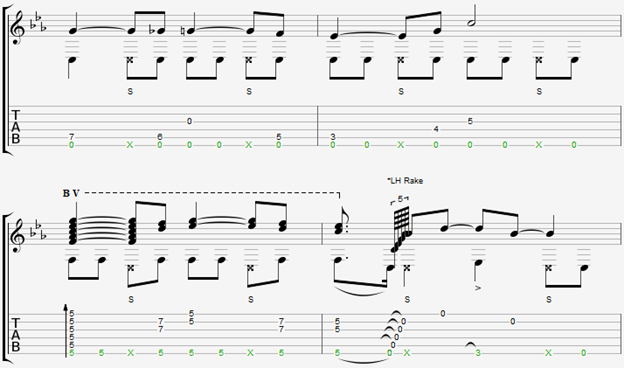
In reviewing the two samples, you’ll notice that the tablature portion looks almost exactly the same. The notation however will tell you a different story. The downward facing stems show what I perceive to be the low melody. Not necessarily all notes are played with the thumb, but it represents the bass line of the passage.
FIGURE 3 – Here it is isolated:
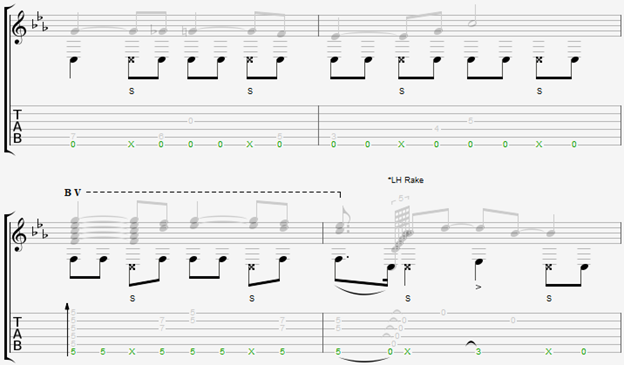
In looking at this by itself, I can tell that it has a mostly steady 8th note motif with snare hits in beats 2 and 4 throughout that create a standard rock & roll backbeat. This gives me the feel of the music. It also gives me a better rhythmic reference as to where the melody falls in relation to the bass line. Now here’s the way I envision this:
FIGURE 4a – Blank bars with quarter note rests that represent each beat:

Figure 4b – Mapping the backbeat string slaps on beats 2 and 4:

FIGURE 4c – Notating the downbeats. At this point, the outlined tonality becomes clearer:

FIGURE 4d – Filling in the blanks. I start with the third beat in each measure. I notice that the third beat in the fourth measure is a “hammer-on from nowhere”, so I note that with an open slur:

FIGURE 4e – Finally the 8th notes in between. The fourth measure again has a bit of a trick in it where the fretting hand does a pull-off followed by a rake, or a fretting hand strum, across strings 6-2. It doesn’t quite start on the “and” of beat one, so I pushed it back to the fourth 16th note of the beat:

There you have the completed bass line, and constructing the melody over the top of that should be a much simpler process. Practicing the parts individually, then combining them, will give you a better understanding of the composer’s use of counterpoint and overall intent. I liken it to the way a seasoned thespian reads a script versus the way a robot would.
I hope this process helps you to take your analysis of other composers’ music to another level. Not only to understand their music so that you can properly convey it to your audiences, but to more deeply appreciate the complexities of what they do and reflect this in your own pieces.

